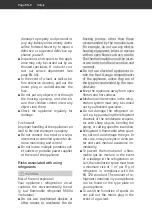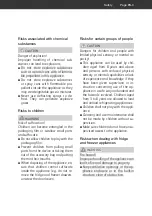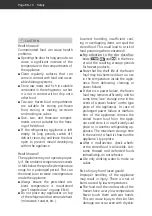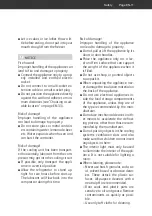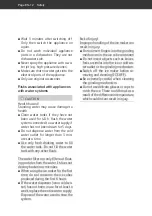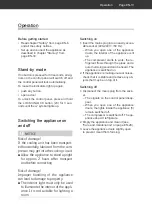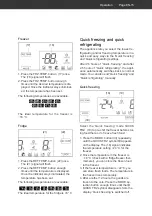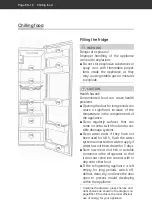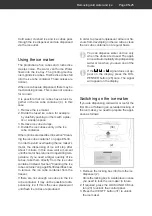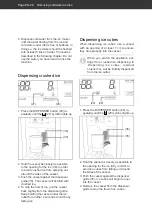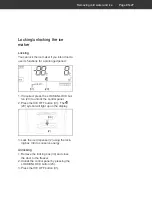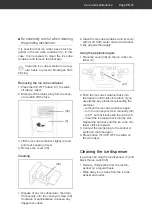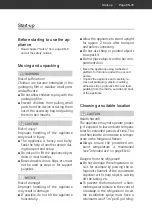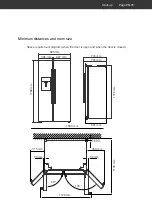
Freezing foods/storing frozen foods
Page EN-21
The maximum storage time in case of a mal-
function can be found on the type plate of the
appliance.
• Set the temperature in the freezer to
–18°C and fill the fridge in such a way
that the temperature conditions inside are
optimally utilised, guaranteeing optimal
food storage.
– Place food you want to freeze on the
Place food you want to freeze on the
glass shelves (6), in the freezer draw-
glass shelves (6), in the freezer draw-
ers (7) and (9) or the wire rack (8).
ers (7) and (9) or the wire rack (8).
– Place already frozen food that can be
Place already frozen food that can be
stored at temperatures up to –12 °C in
stored at temperatures up to –12 °C in
the 2-star door shelves (3)
the 2-star door shelves (3)
– Place already frozen food that can be
Place already frozen food that can be
stored at temperatures down to –6 °C in
stored at temperatures down to –6 °C in
the 1-star door shelf (1).
the 1-star door shelf (1).
• Combine the drawers, glass shelves and
door shelves as shown in the diagram on
page EN-4 to achieve the most efficient
use of energy for your appliance.
Preparing food
• Only freeze high quality food.
• Freeze fresh and prepared food dry and
unseasoned. Unsalted foods are more
durable.
• Allow prepared food to cool before freez-
ing. This not only saves power, but also
prevents excessive frost formation in the
freezer.
• Carbonated drinks are not suitable for
freezing because the carbon dioxide es-
capes during freezing.
Selecting suitable packaging
Packaging is important when freezing. This
will protect against oxidation, penetration by
microbes, transfer of odours and flavourings
and drying out (freezer burn).
• Only use packaging material that is
strong, impermeable to air and liquid, not
too stiff and labelled. It should be desig-
nated as suitable for freezer use.
Portioning food
• Create flat portions if possible; these
freeze through to the core faster.
• Expel the air from the freezer bag as this
causes the contents to dry out and takes
up space.
• Use plastic clips, rubber bands or adhe-
sive tapes to seal.
• Fill liquid containers no more ¾ full, be-
cause liquids expand when frozen.
• Do not store any glass or metal contain-
ers containing liquid. These containers
could break.
• Only freeze strong alcohol standing up-
right and closed tightly.
• Label the frozen food by type, quantity,
amount and expiry date.
Use waterproof marker pens or adhesive
labels wherever possible.
Freezing capacity
You will find the freezing capacity for your ap-
pliance on the appliance type plate.
• Adhere to the maximum freezing capacity
if possible.
Up to the indicated maximum freezing
capacity:
If you adhere to the maximum freezing ca-
pacity, the food will freeze at the fastest rate.
The temperature in the freezer briefly rises af-
ter placing fresh goods inside. After 12 hours,
the goods are frozen to the core.
Above the indicated maximum freezing
capacity:
If you want to freeze more food in one go as
an exception, freezing will take longer. Keep
fresh goods out of contact with existing fro-
zen foods, as the frozen foods could start to
defrost. If contact with stored food cannot be
avoided, we recommend that you create a
cold reserve in the freezer before freezing the
fresh goods (see "Quick freezing and quick
refrigerating“ on page EN-15).


